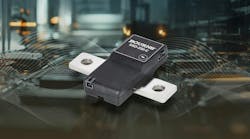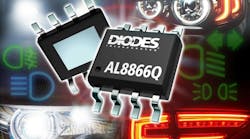Shunt Current Sensors Bring Affordable Precision to Battery Apps Up to 250 A
Bourns Inc. expanded its Riedon family of digital shunt sensors with the Riedon Model SSD-250A Series of devices. Able to precisely measure currents of up to 250 A, the new series comprises two versions: the RS-485 serial interface model, which can also be configured as a Modbus RTU, and a customizable CAN bus model. This series of sensors is available with current ranges of 100 A and 500 A, too.
Offered in a compact system-in-package (SIP), the Model SSD-250A Series delivers calibrated and temperature-compensated digital output across a −40 to +115°C operating temperature range. Combined with 1,500-V DC galvanic isolation, it’s well-suited for current-sensing solutions across a wide variety of battery-related applications, including renewable-energy systems, motor drives, and EV charging stations.
Like the other members of its product family, the SSD-250A can help eliminate the need for periodic device calibrations, all while providing highly accurate measurements. In addition, the new series features considerably lower insertion resistance than passive shunt sensors and Hall-effect sensors.
The Riedon Model SSD-250A Series Shunt Sensor, available now, is RoHS-compliant.





